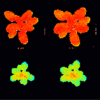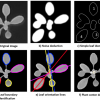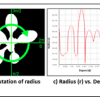HPGA
Michigan State University
Overview
| Measured variables | surface, count |
|---|---|
| Operating system | mac, windows, linux |
| Licence | freeware |
| Automation level | automated |
| Plant requirements | Arabidopsis |
| Export formats | unknown |
| Other information | - |
Scientific article(s)
Functional approach to high-throughput plant growth analysisOliver L Tessmer, Yuhua Jiao, Jeffrey A Cruz, David M Kramer, Jin ChenBMC Systems Biology, 2013 View paper
Similar tools
Other tools for the analysis of rosette:
Description
Taking advantage of the current rapid development in imaging systems and computer vision algorithms, we present HPGA, a high-throughput phenotyping platform for plant growth modeling and functional analysis, which produces better understanding of energy distribution in regards of the balance between growth and defense. HPGA has two components, PAE (Plant Area Estimation) and GMA (Growth Modeling and Analysis). In PAE, by taking the complex leaf overlap problem into consideration, the area of every plant is measured from top-view images in four steps. Given the abundant measurements obtained with PAE, in the second module GMA, a nonlinear growth model is applied to generate growth curves, followed by functional data analysis. Experimental results on model plant Arabidopsis thaliana show that, compared to an existing approach, HPGA reduces the error rate of measuring plant area by half. The application of HPGA on the cfq mutant plants under fluctuating light reveals the correlation between low photosynthetic rates and small plant area (compared to wild type), which raises a hypothesis that knocking out cfq changes the sensitivity of the energy distribution under fluctuating light conditions to repress leaf growth.
Source: HPGA website


